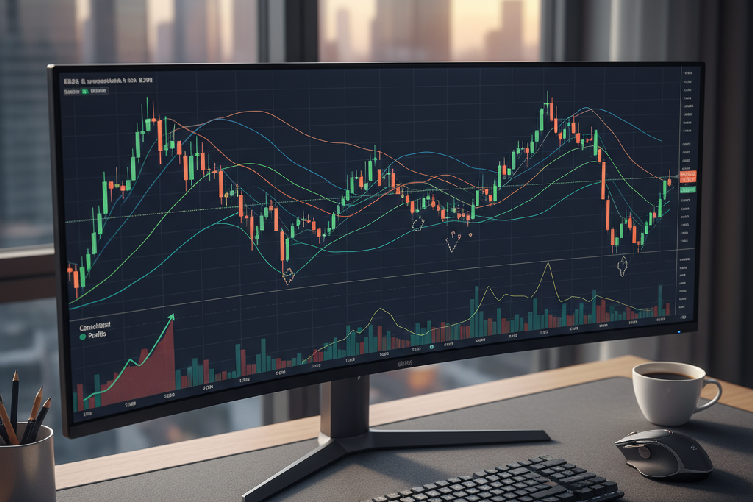Mastering VWAP: 7 Powerful Swing Trading Strategies
A VWAP swing trading strategy is an approach that leverages the Volume Weighted Average Price (VWAP) to pinpoint buy and sell signals for swing trades. This method melds VWAP analysis with fundamental swing trading principles, helping traders find ideal entry and exit points for positions held over several days or weeks.
By using a VWAP strategy, you get a volume-adjusted perspective on price action. This can make identifying crucial support and resistance levels much more effective. To use VWAP for swing trading, simply monitor the price in relation to the VWAP line. When the price is above VWAP, it suggests a potential uptrend; when it’s below, it hints at a downtrend.
This technique helps swing traders ride medium-term market movements by aligning with institutional trading patterns and momentum. Incorporating VWAP into your strategy, especially when working with a reliable online forex broker, can sharpen your decision-making and boost your chances of profitable trades.
The Foundation of VWAP Swing Trading
Understanding VWAP Basics
VWAP serves as a trading benchmark, showing the average price of a security throughout the day, weighted by volume. It gives traders valuable insights into both the trend and the true value of an asset. Unlike simple moving averages, VWAP includes volume data, making it a more robust indicator for analyzing price action.
The formula for VWAP is:
VWAP = Cumulative (Price * Volume) / Cumulative Volume
Key components include:
- Price Data: Often calculated as (High + Low + Close) / 3.
- Volume Data: The total number of shares or contracts traded.
- Time Period: Typically calculated fresh from each market open.
- It provides a more accurate picture of actual trading activity.
- It helps identify potential support and resistance levels.
- It offers clues into institutional trading behavior.
- It reduces the impact of potential price manipulation.
- VWAP isn’t a lagging indicator in the same way moving averages are.
- Its use isn’t limited to day trading; it’s highly applicable to swing trading.
- VWAP doesn’t predict future prices but instead reveals the current value.
- Volume Profile Integration: Identifying high-volume price levels to spot potential breakout or support/resistance zones.
- Volume Spread Analysis: Analyzing how volume is spread across price levels to detect potential reversals and institutional footprints.
- Relative Volume Analysis: Comparing current volume to historical averages to confirm trend strength or spot unusual activity.
- 1980s: VWAP is first developed for institutional use.
- 1990s: It becomes integrated into electronic trading systems.
- 2000s: Retail traders begin to adopt VWAP into their strategies.
- 2010s & Present: Advanced algorithms, AI, and machine learning now use VWAP for sophisticated trading strategies.
- Buy Signal: The price crosses decisively above the VWAP line, signaling potential bullish momentum.
- Sell Signal: The price crosses firmly below the VWAP line, indicating a potential bearish trend.
- Confirmation: Use other indicators like RSI or MACD to confirm your entry and exit signals for greater confidence.
Benefits and Misconceptions
Using VWAP in your trading offers several advantages:
It’s also important to clear up some common misconceptions about VWAP:
The Significance of Volume in VWAP
Volume is critical for validating price movements and confirming trends. By incorporating volume, VWAP gives you a clearer view of the market.
Volume analysis techniques you can use with VWAP include:

Historical Context of VWAP Trading
VWAP was originally created for institutional traders to help them evaluate their trade execution quality, minimize market impact, and benchmark performance against the average market price. It has evolved significantly over the decades.
Top VWAP Swing Trading Strategies
1. VWAP Crossover Strategy
The VWAP crossover is one of the most direct and effective VWAP strategies. When the price crosses above or below the VWAP line, it generates a potential signal to enter a trade, making it a popular way to capitalize on trend reversals and continuations.
Here are the key points:
Implementation Guidelines
To execute this strategy effectively, follow these steps:
For entries, you can use a market order right at the crossover for quicker execution or a limit order just beyond the line to reduce slippage. Furthermore, scaling into a position across multiple price points can help you manage risk and improve your average entry price.
By mastering this foundational strategy, you can build a solid framework for using VWAP in your swing trading, helping you make more informed and strategic decisions in the market.





